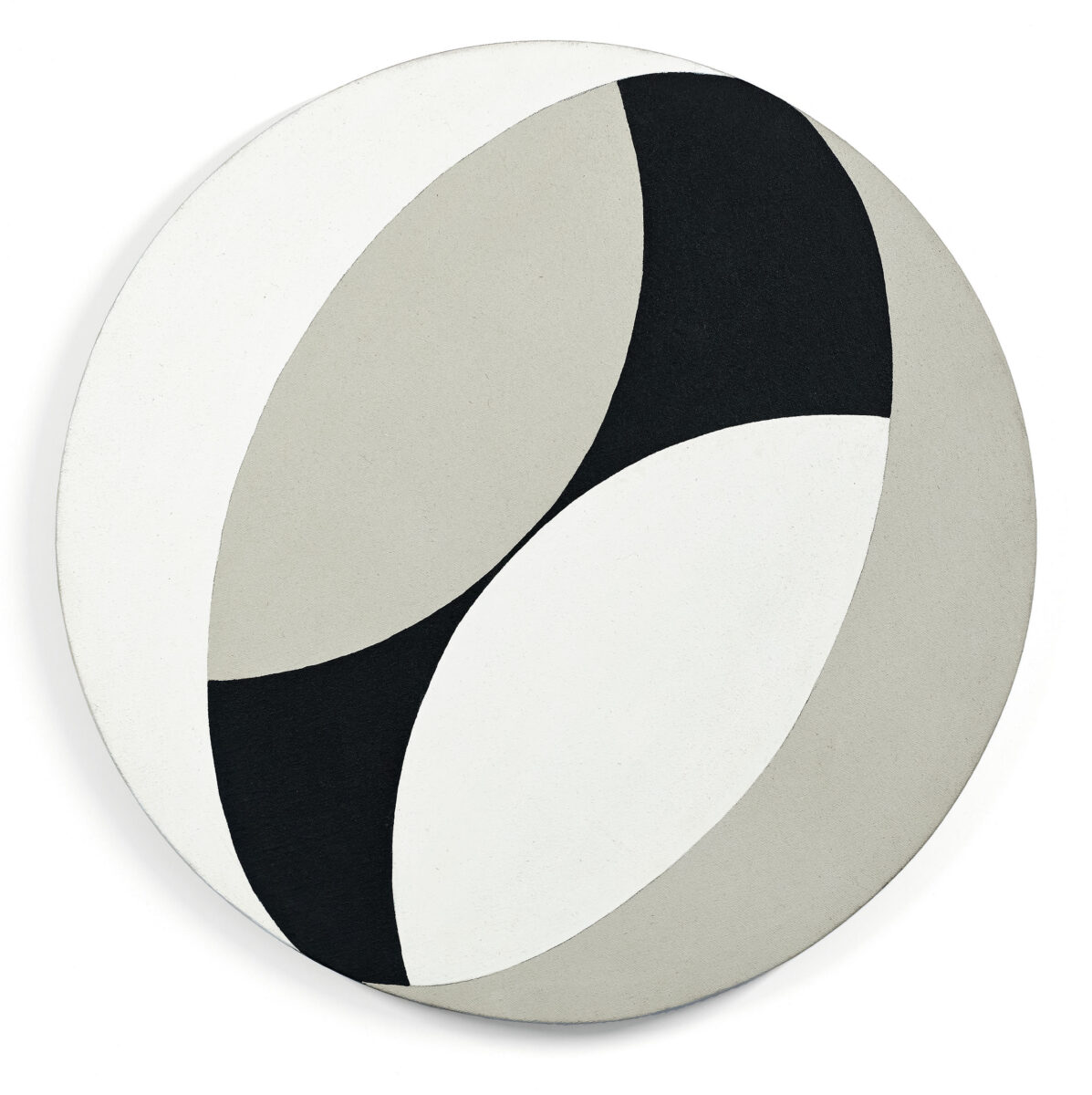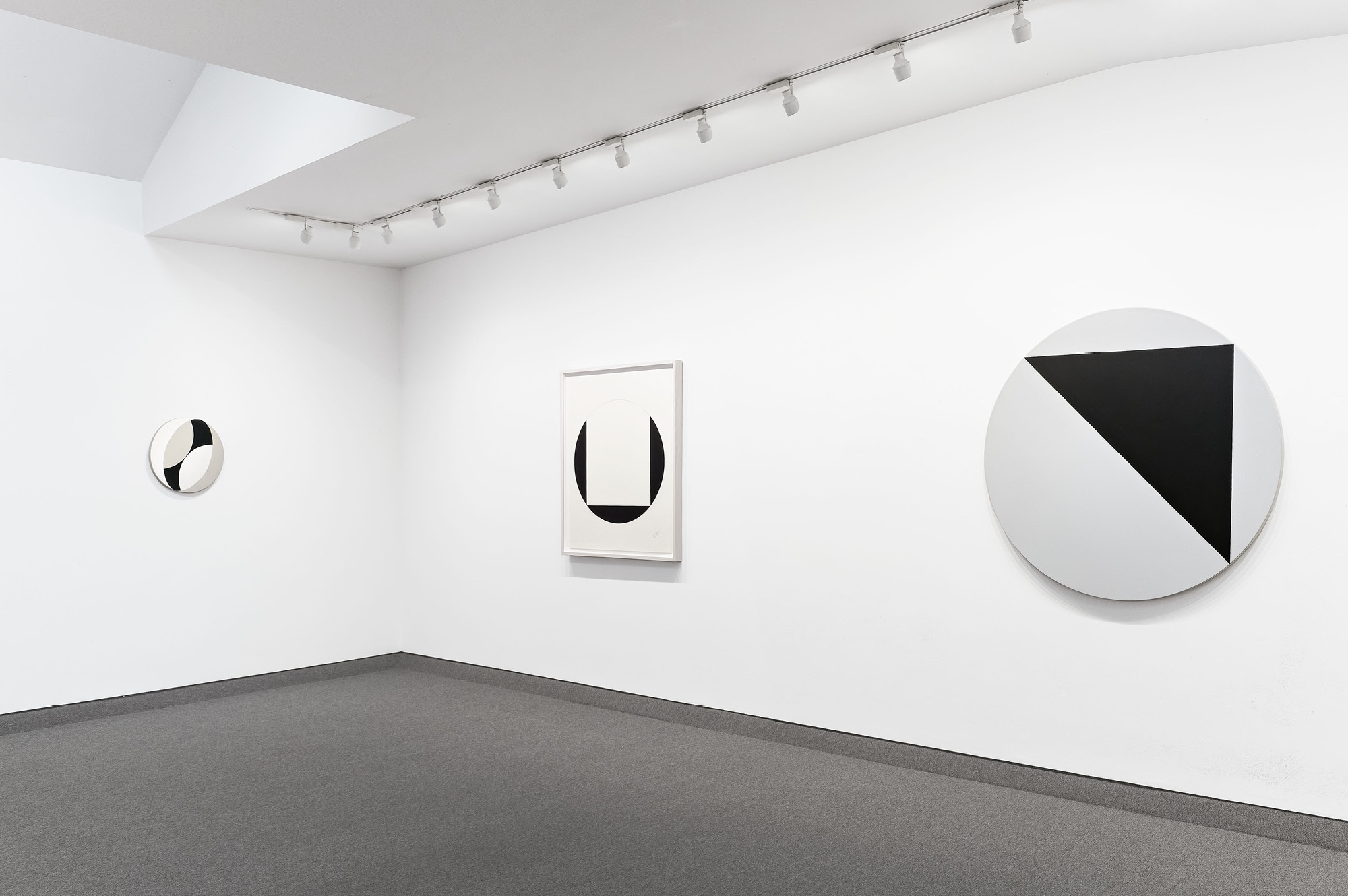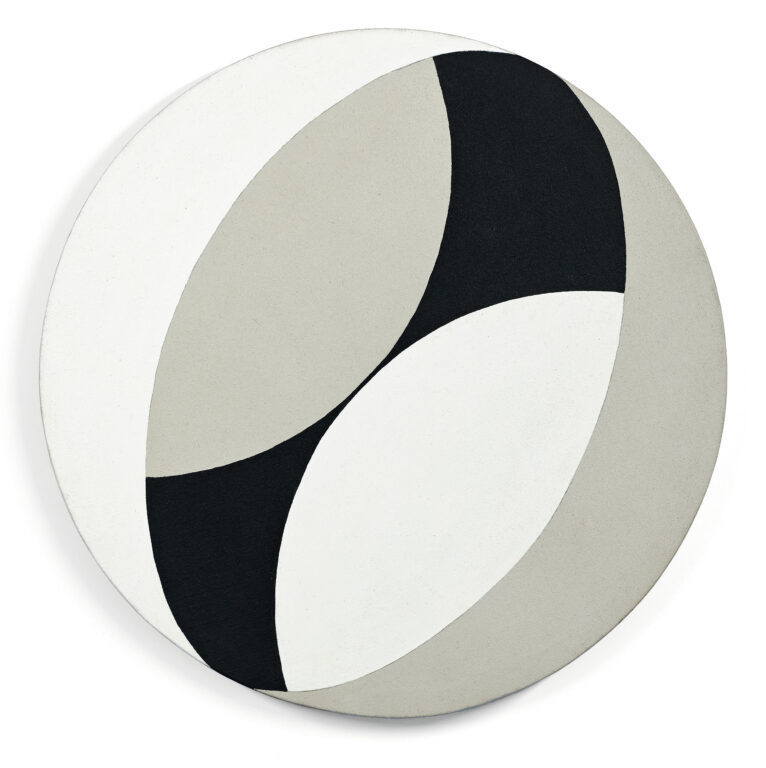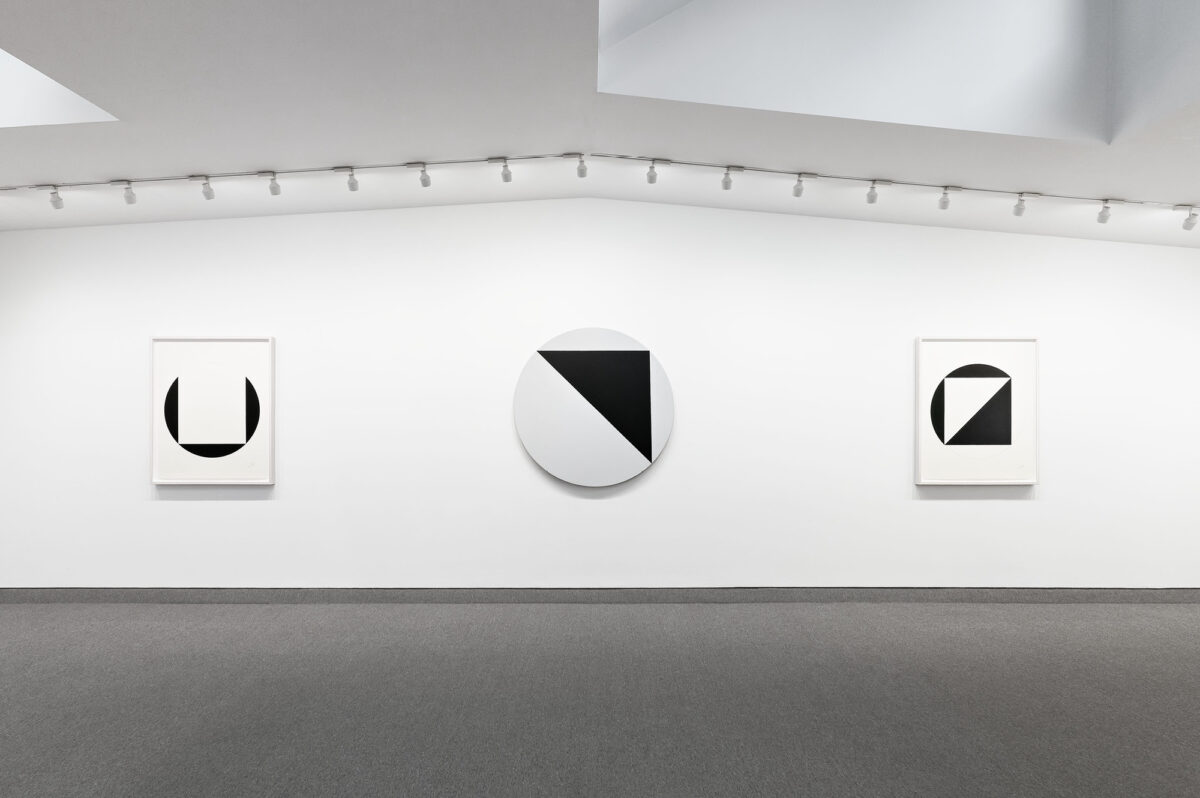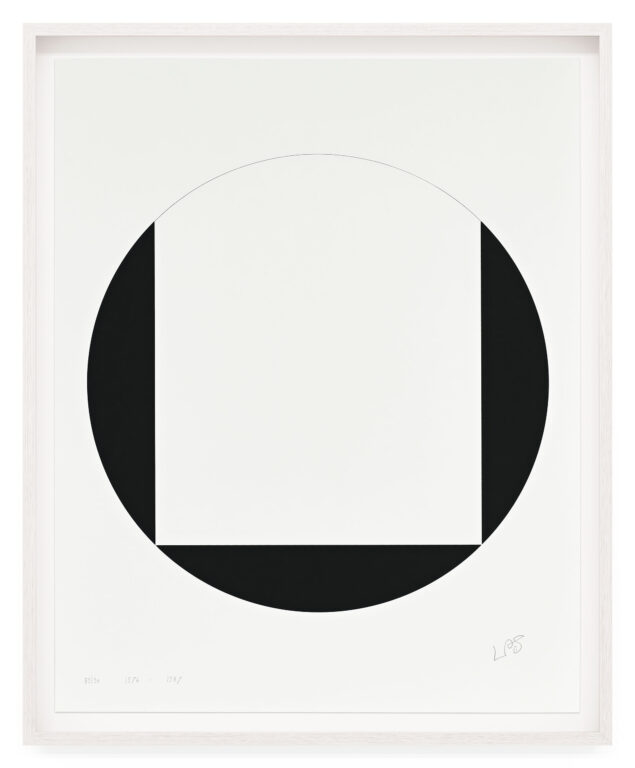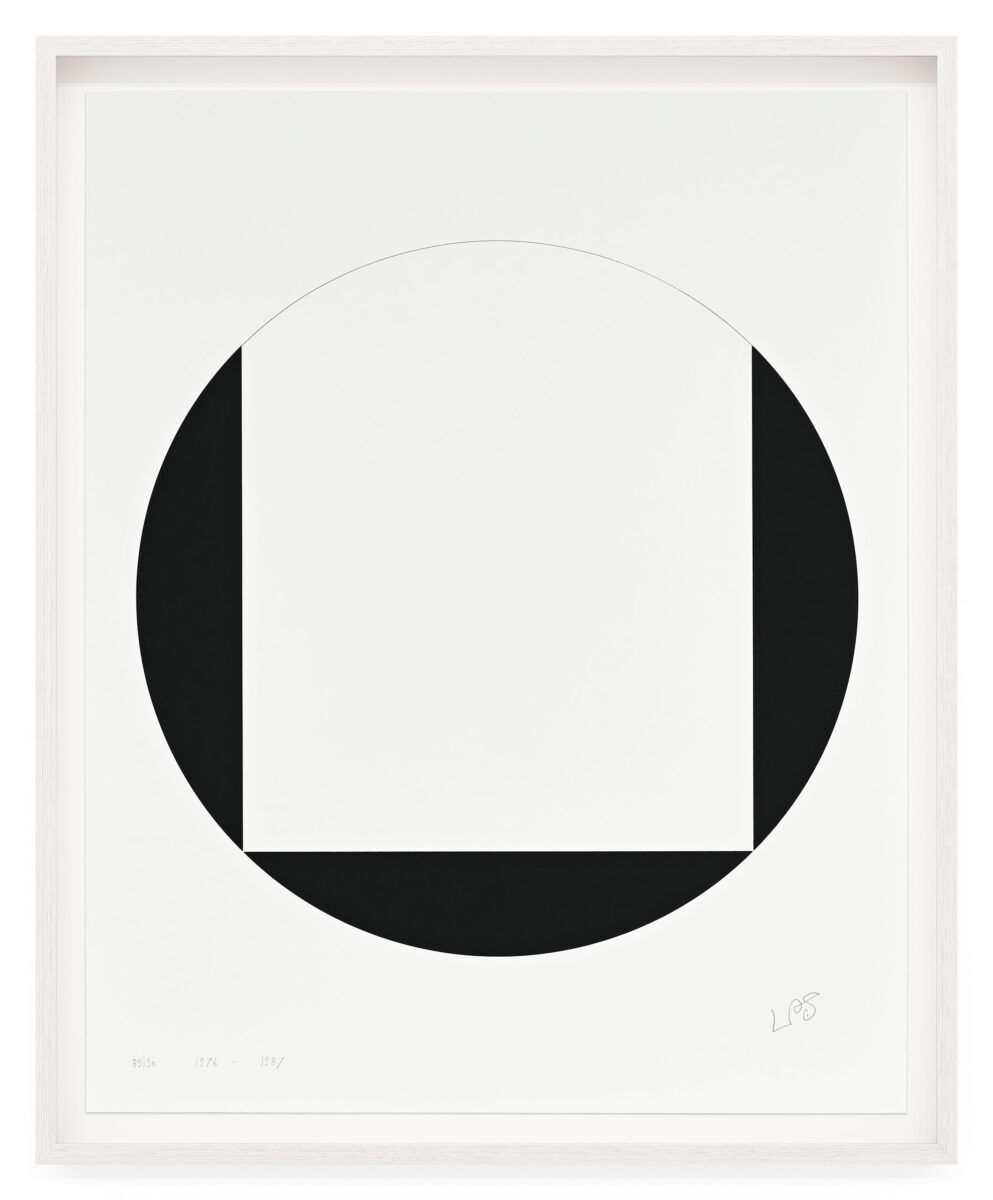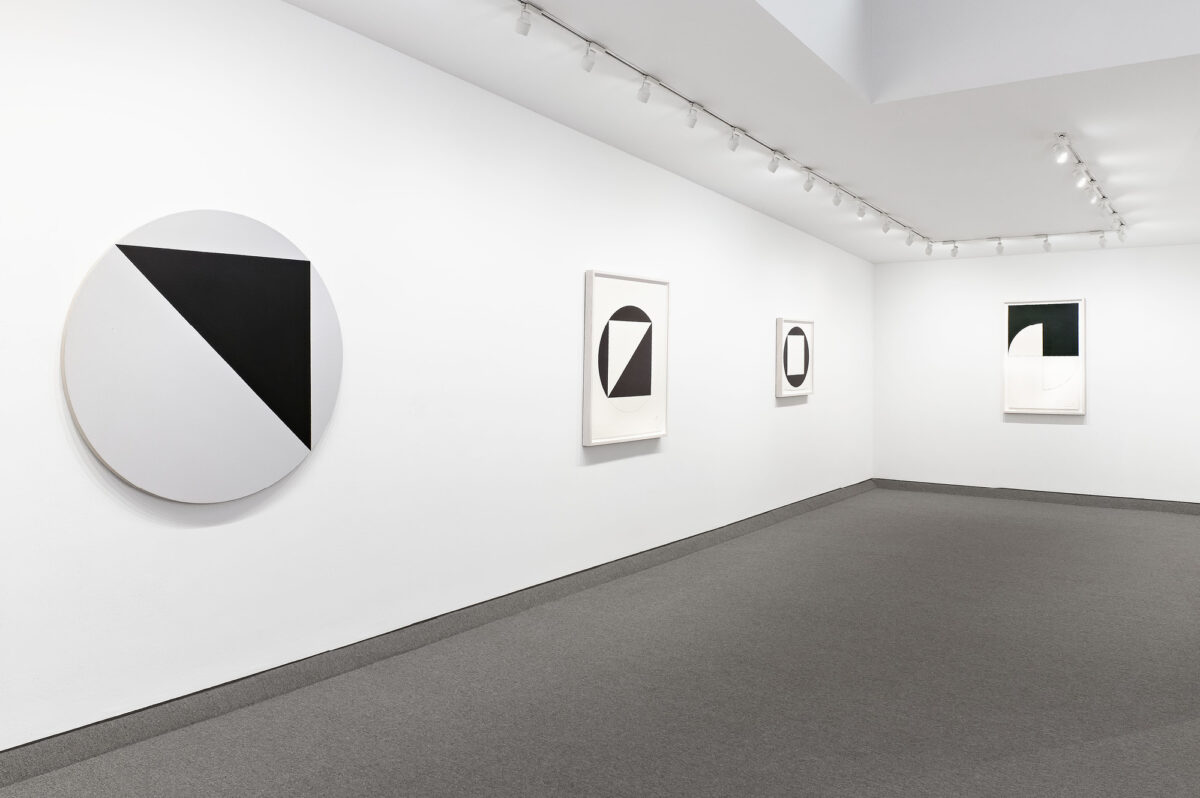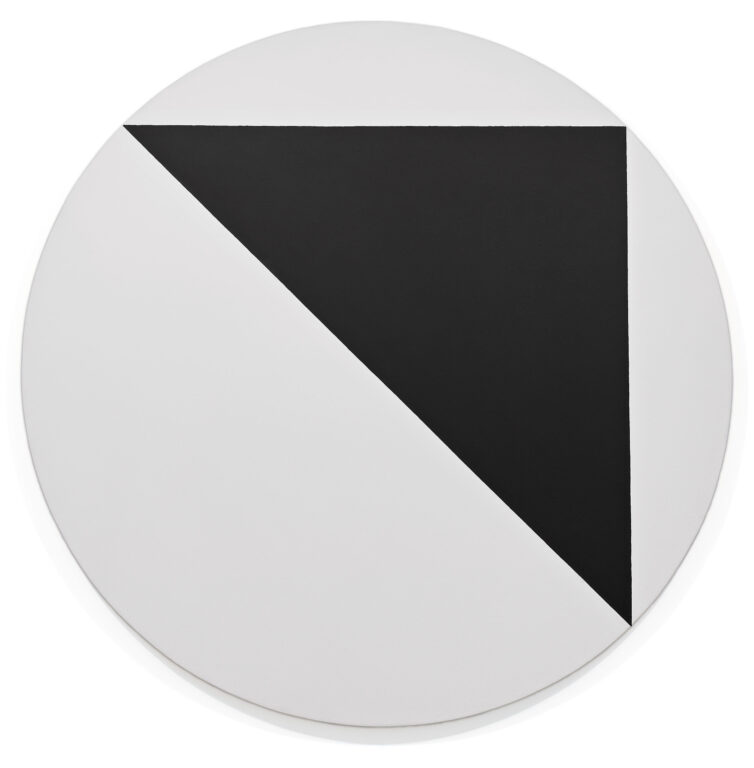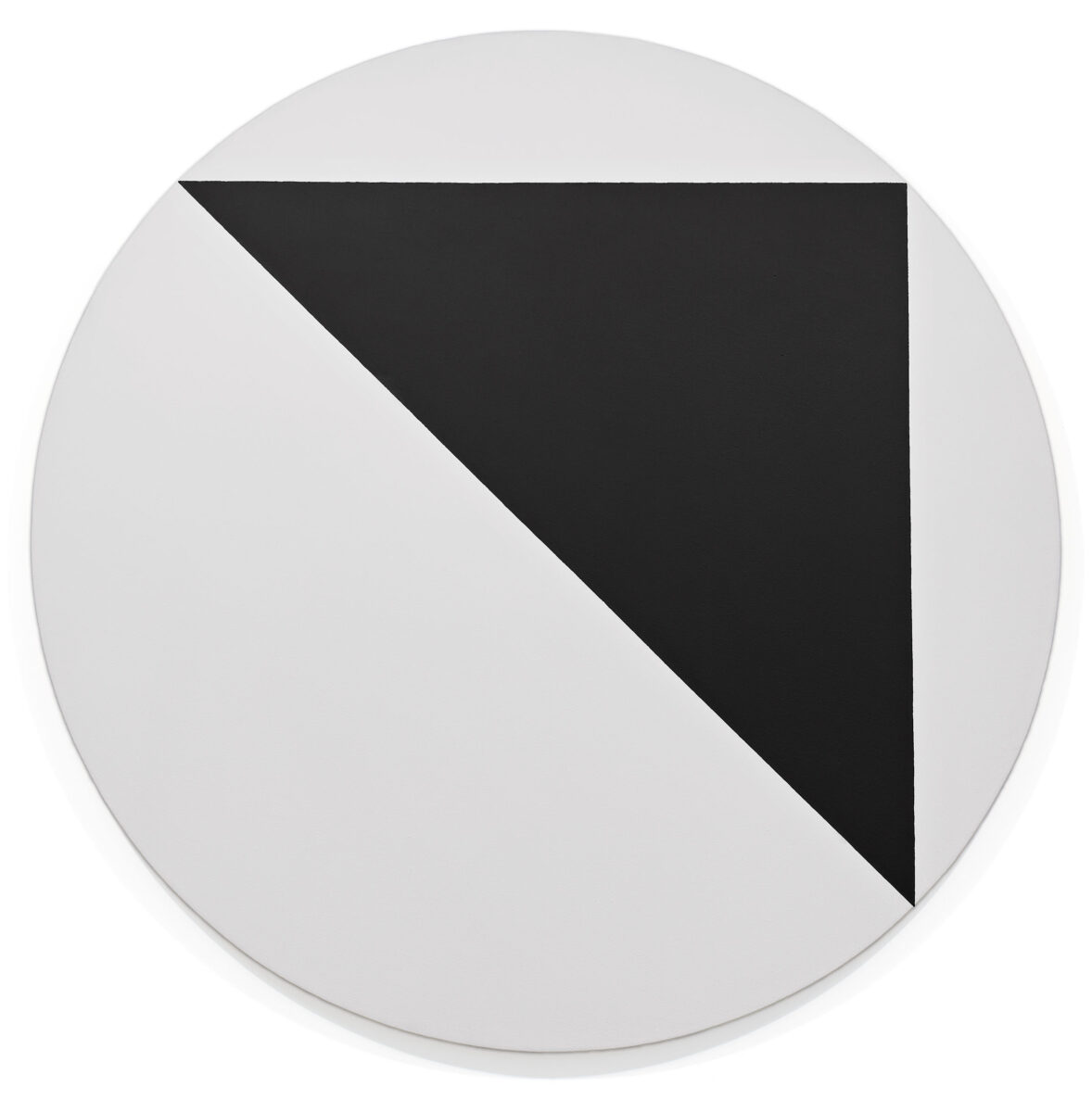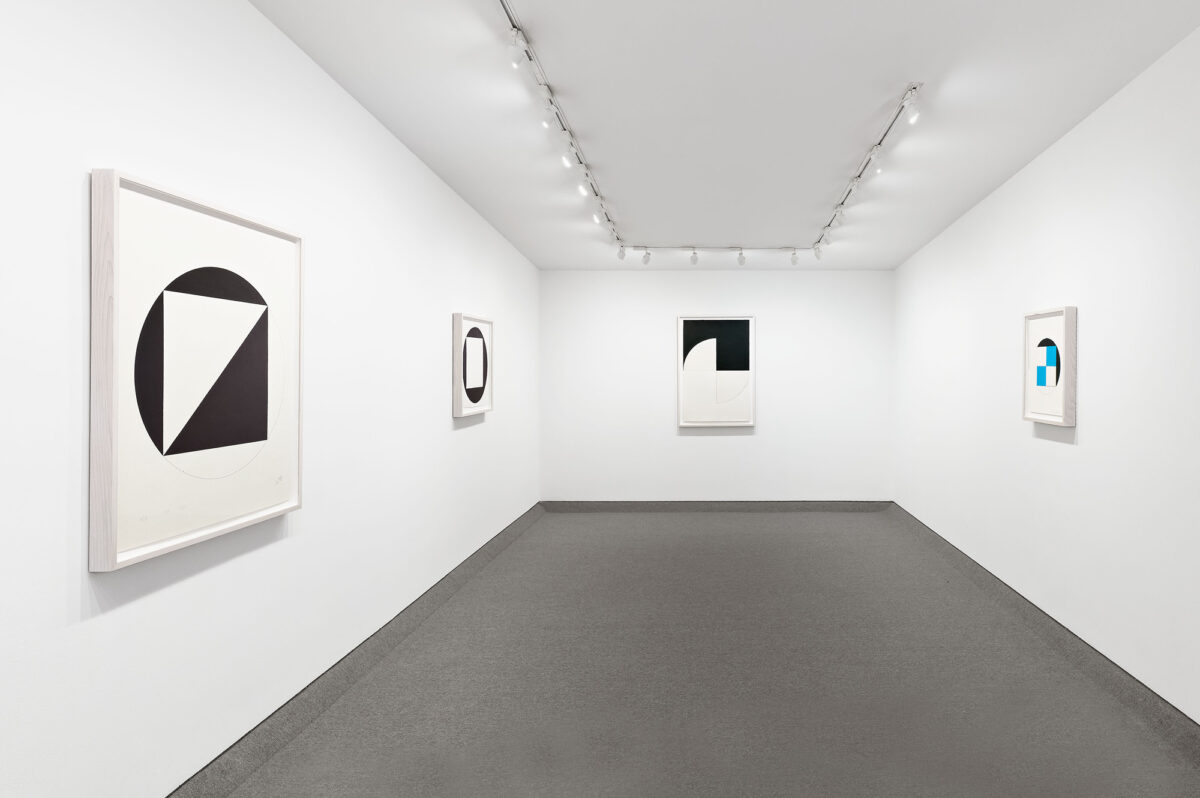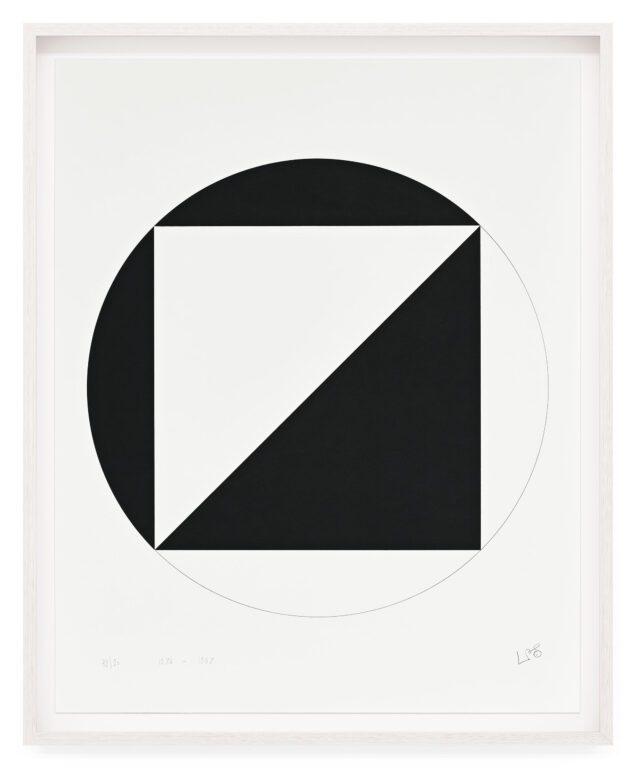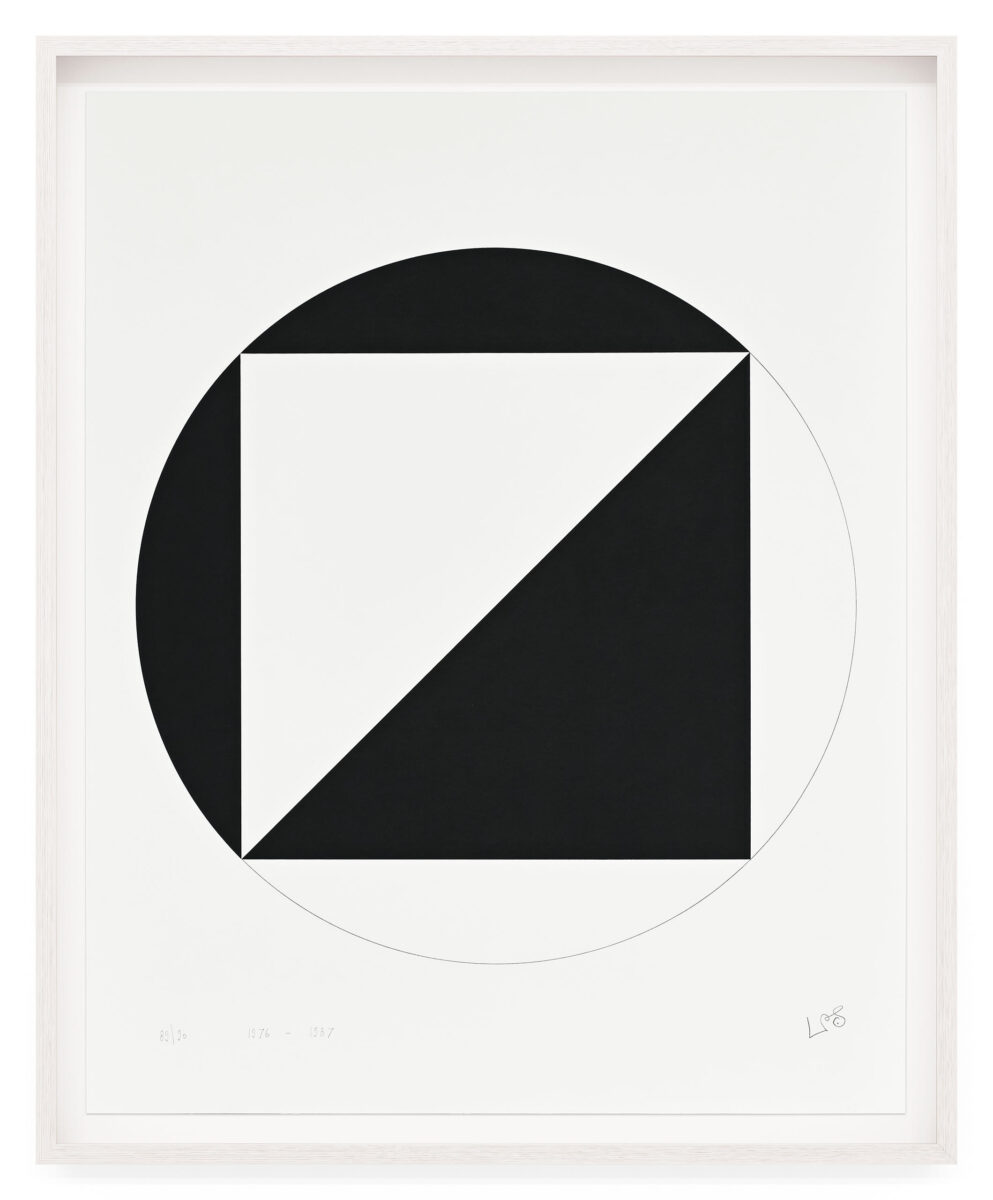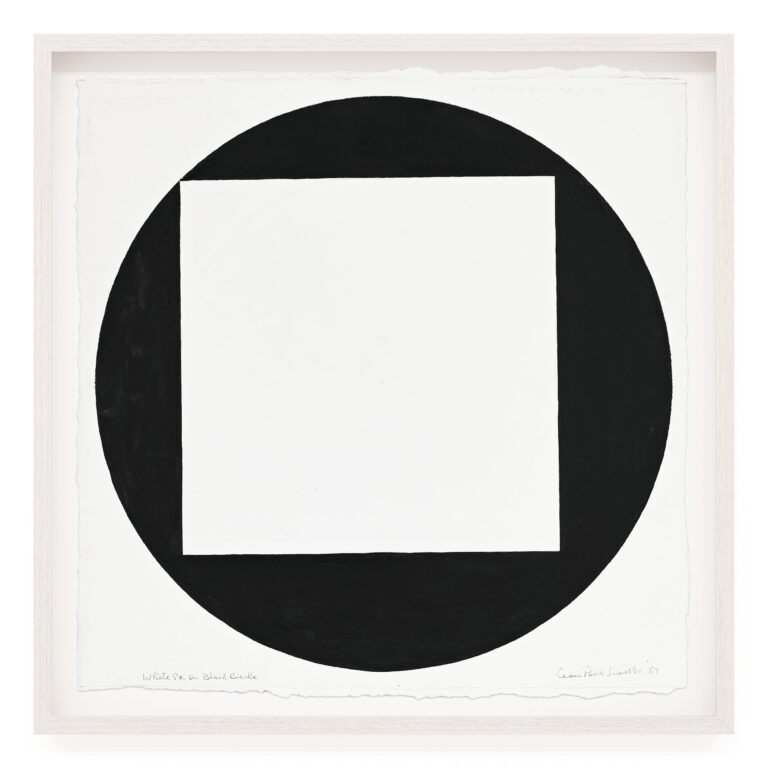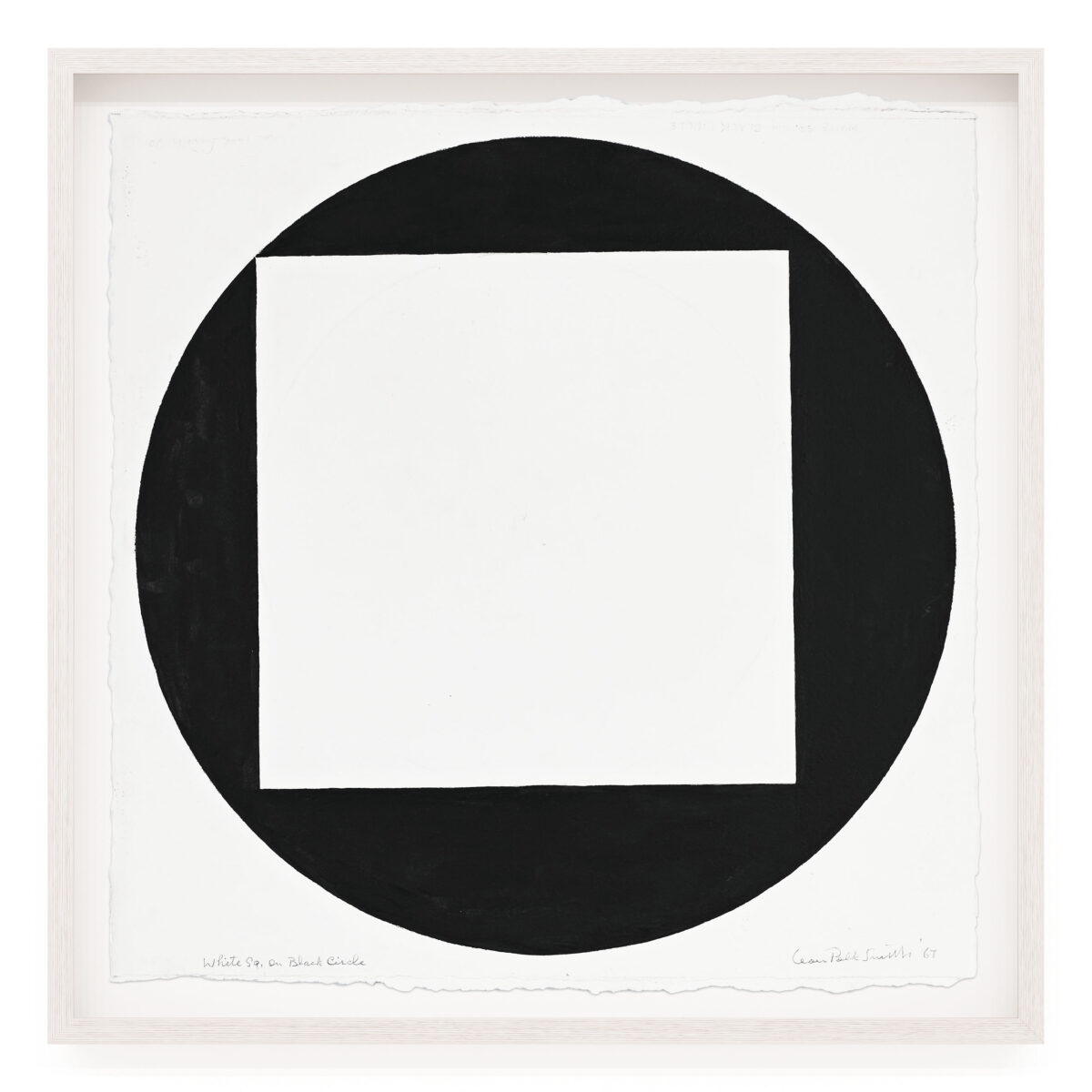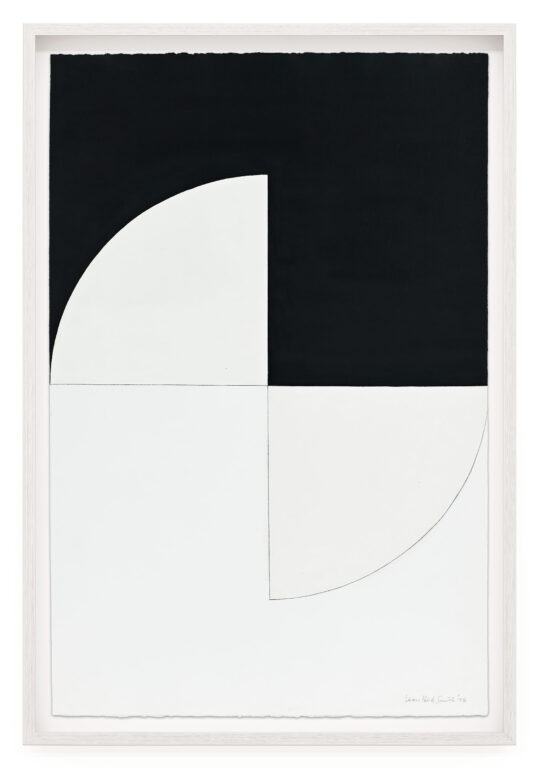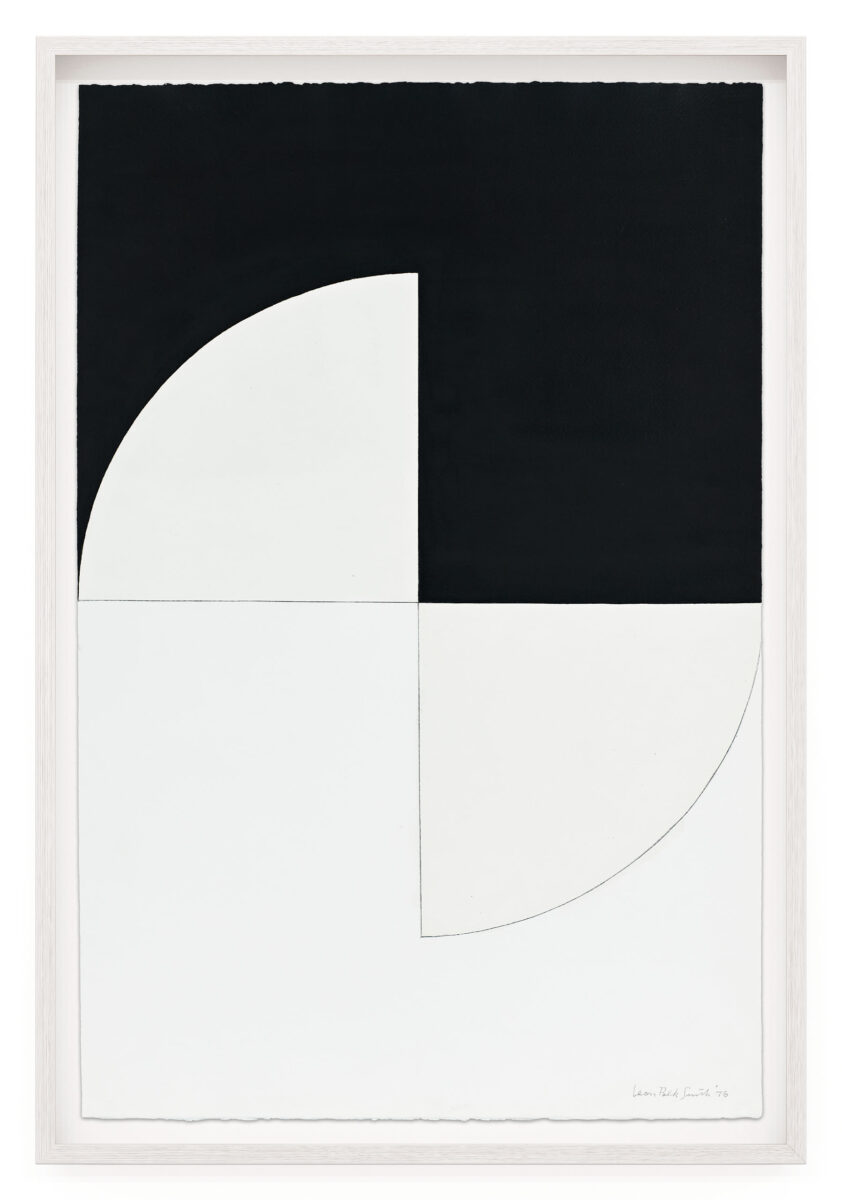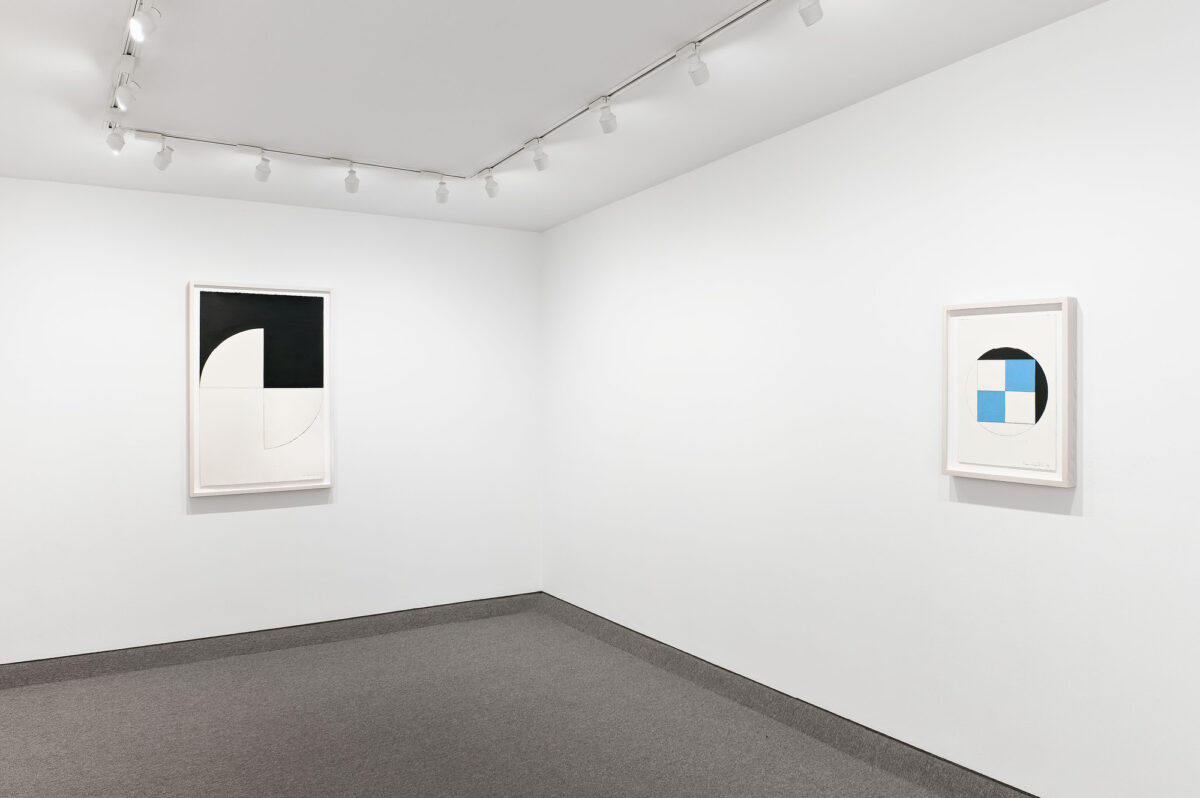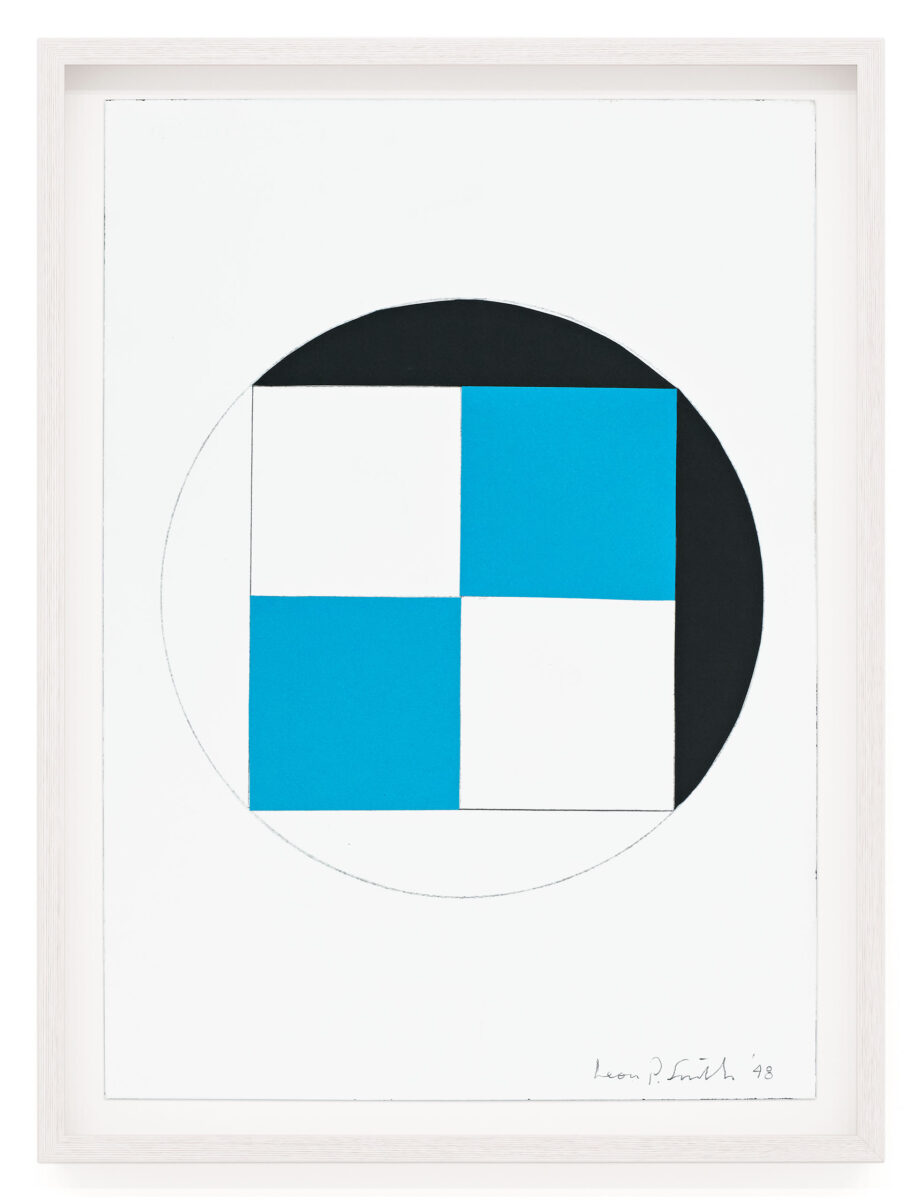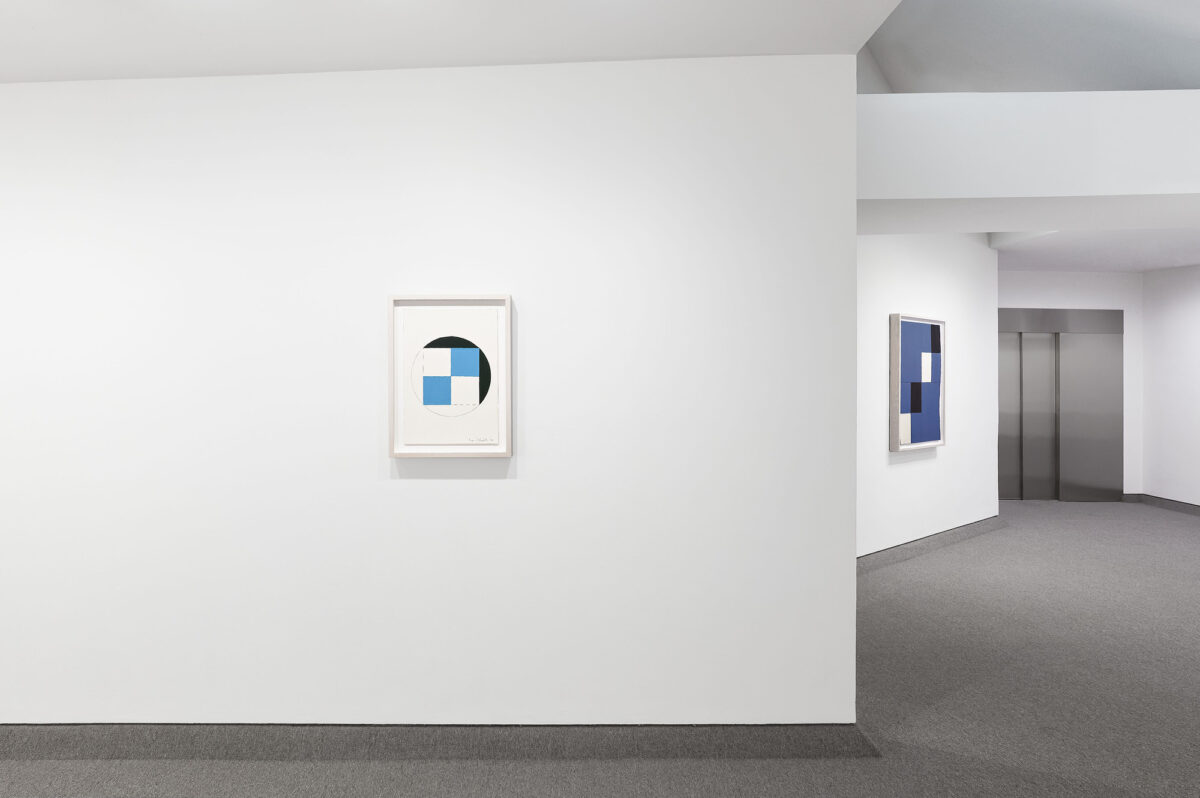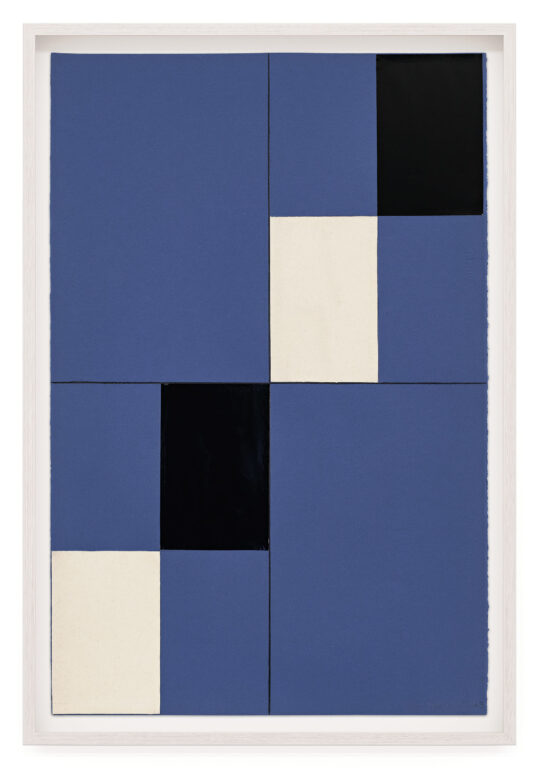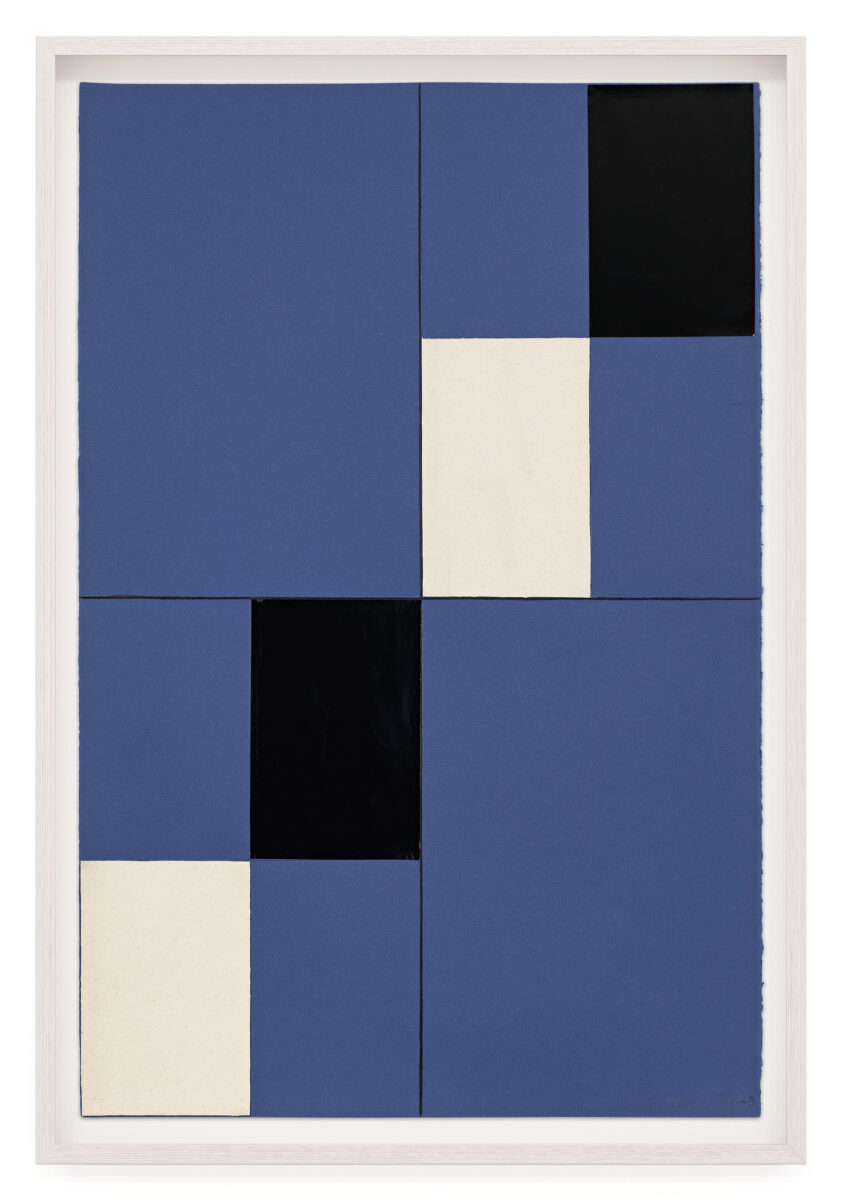“What I was seeking through the 1940s was to find my outlet from this vertical/horizontal and to express the same thing that Mondrian had worked with, that is the form-space equilibrium, the interchangeability of form and space. I wanted to find a way of using that in a curvilinear manner, in curved lines, free forms. It looks so very simple. I always thought it looked as if an idiot could have done it overnight. But I was seven or eight years finding that.”
–Leon Polk Smith
Krakow Witkin Gallery has presented the work of Leon Polk Smith (1906–1996) in several contexts over the past thirty years, but the current show is his first solo exhibition at the gallery. In addition, it is the first presentation of his work to place his editioned prints in the context of his paintings, drawings, and collages.
Smith was born in Oklahoma territory to undocumented Cherokee immigrant parents from Tennessee. He grew up in impoverished circumstances surrounded by Chickasaw community culture. He initially worked on his family farm and then as a journeyman laborer to help support his family. Filled with academic drive, he attended college In Oklahoma and went on to study at Teachers College at Columbia University in New York City. All the while making his own art, he supported himself teaching and as education administrator in Delaware, Georgia, and Florida, before finding his way back to New York City. In 1941, Smith had his first solo show in Manhattan.
Over the next six decades, culminating with his 1995–96 retrospective at the Brooklyn Museum, Smith sustained a solid, growing reputation as an early and continuing innovator in reductive geometric abstraction and complex, multi-part shaped canvases. In the 1950s and ’60s, younger painters including Al Held, Robert Indiana, Ellsworth Kelly, and Jack Youngerman visited his studio, placing his work at a key moment in the transition from gestural to hard-edge abstraction.
Having first internalized the forms, meanings, and aesthetics of Oklahoma Native American art and culture, Smith, like other US abstract artists, was deeply influenced by the art of Picasso, Mondrian, Arp, Brancusi, and Matisse. He explored other cultural approaches to image, shape, and color in a way that was referential, personal, and yet generalized enough to be broadly accessible. The current show is a survey from 1948 to 1987 of Smith’s exploration of circles, squares, and triangles, along with their interrelationships in positive and negative space. While some works in the show emerge from a single type of shape, most works display the artist’s masterful use of tension between shapes that he developed over a lifetime of dedicated investigation.
In February 2026, the Addison Gallery of American Art will open “Both Sides of the Line: Carmen Herrera & Leon Polk Smith,” organized by the University of Michigan Museum of Art, Ann Arbor, where it is presently on view. The exhibition is accompanied by a major publication.
Krakow Witkin Gallery thanks John Koegel, Patterson Sims, and Ginger Miller of the Leon Polk Smith Foundation, as well as Betsy Senior Fine Art, for making the current exhibition possible.
“I think that the proportion of the canvas comes first. I have a feeling that I want to do a canvas about a certain size, and I don’t know just what I am going to paint so I stretch it to size and hang it on the wall and sit down and look at it. Sometimes I figure: Oh, should I do anything to it? A well stretched canvas is very beautiful, just to sit and contemplate. And then the proportion, the size of the canvas often suggests a form. I will get up and draw this one line through the canvas which creates two forms, one on either side of the line, and while I am drawing this line, it seems that I am traveling many, many miles in space instead of just fifty inches or sixty inches whatever the canvas happens to be, but it is a great, great distance from one point to the next and around the curve, and I begin to feel the tensions develop and the forces working on either side of this line.”
–Leon Polk Smith
